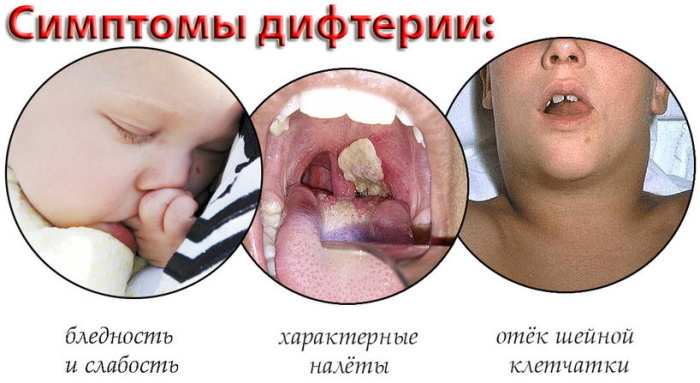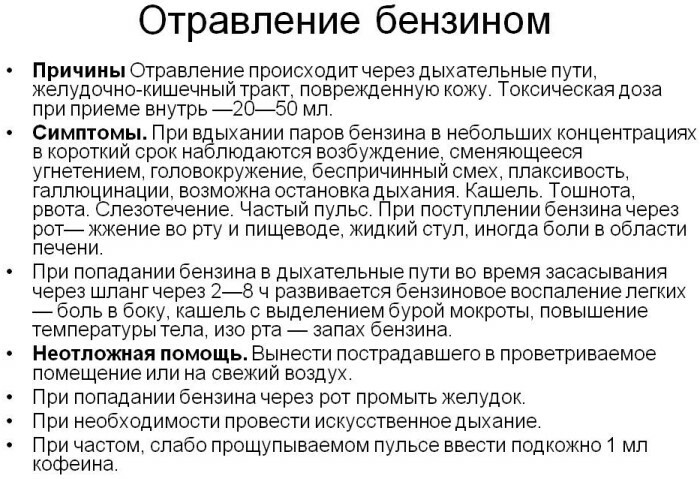Content
- Characteristics and properties
- The table is ok
- Increase symptoms
- Reasons for the increase
- Internal bleeding in the postoperative period
- Inflammatory process
- Anemia
- Oncology
- Deficiency of vitamins B12, B9
- Viral hepatitis
- Pathologies of the hematopoietic system
- Therapy with cytostatic drugs
- Indications for research
- How is it determined
- How to bounce back
- Aspirin Cardio
- Clopidogrel
- Sodecor
- Dicinon
- Video about PDW in analysis
The relative width of the distribution of platelets in blood volume Is a physiological indicator of an organism that reflects the dynamics of the distribution of these cells in the human vascular system. Normally, a stable balance of the quantitative indicator of young and old platelets should be maintained.
A change in the relative width of the distribution of platelets in the direction of their increase or decrease may be a symptom of one of the diseases of the hematopoietic organs. In rare cases, a violation of this balance is an individual feature of the subject's body.
Characteristics and properties
The relative width of distribution of platelets by volume (PDW) is one of the indicators of the results laboratory study of venous blood, which determines the degree of heterogeneity cells.
PDW analysis shows which platelets are predominant in the patient's cardiovascular system. Young cells with an increased level of functional activity, or old ones, which are practically unsuitable for the operative solution of physiological tasks to preserve the vital activity of the organism.
Human blood contains young and old platelets. For the circulatory system to function properly, these cell types must be in a state of equilibrium.
Violation of this balance towards an increase in the concentration of old platelets means a deterioration in the general condition of a person, a decrease blood clotting indicators, an increased risk of opening external or internal bleeding as a result of injury fabrics. The indicator of the relative width of the distribution of platelets over the volume of the blood being examined is studied by a hematologist.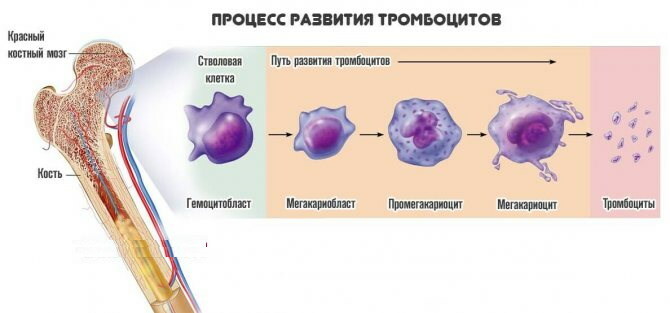
Examination for the PDW level is necessary for the timely determination of pathological processes occurring in the human body. In terms of their structural structure, platelets are heterogeneous. In the blood of a healthy person, very large and smaller cells are equally often found.
In this case, it is extremely important that platelets of different fractions are evenly distributed throughout the bloodstream. The analysis for the relative width of the distribution of platelets by volume simultaneously measures the concentration of these cells in the blood. The primary focus of PDW research is platelets. These are blood cells, the average size of which is from 3 to 5 microns.
Platelets are oval and flat, non-nuclear, and have the following physiological properties:
- take part in the biological reactions of the human body, in which a blood clot forms;
- stop internal and external bleeding in case of tissue damage;
- promote active growth and rapid restoration of the walls of blood vessels;
- deliver cellular immune complexes to the focus of the inflammatory process, and also take part in a faster recovery of diseased tissues;
- participate in cleansing the blood of antigens.

Platelets are produced in the bone marrow. Most cells of this type are localized in blood vessels. An insignificant part of platelets is located in the tissues of the spleen. The average lifespan of platelets is 8 to 11 days. Old cells that have undergone degeneration are utilized by the liver.
The table is ok
The relative width of the distribution of platelets by volume is increased in cases where a person has diseases of the hematopoietic system. The table below shows the PDW rates for women, men and children.
| A patient | Normal PDW Values | Notes (edit) |
| Women | 15 to 17% | The analysis for the relative width of the distribution of platelets by volume in the general blood flow does not surrender during menstruation. At this time, there is a sharp decrease in PDW values. During pregnancy, the rate of this analysis shifts to 10-20%. |
| Men | 15 to 17% | This PDW value is the norm for all adult men, regardless of their age. |
| Children | 10 to 14% | During the phase of active growth of the child, these values may change insignificantly towards decrease and increase, which is an indicator of the norm. |
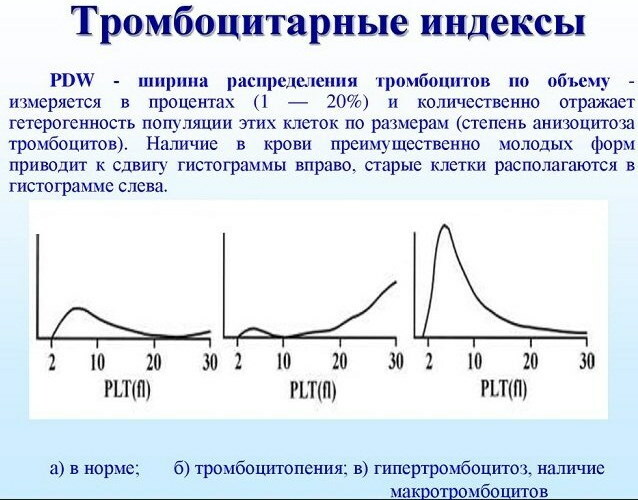 The excess of the level of new and old platelets should not be more than 10%. Otherwise, the risk of blood vessel thrombosis increases dramatically. At the same time, a decrease in the physiological balance of young and old platelets can provoke internal bleeding.
The excess of the level of new and old platelets should not be more than 10%. Otherwise, the risk of blood vessel thrombosis increases dramatically. At the same time, a decrease in the physiological balance of young and old platelets can provoke internal bleeding.
Increase symptoms
The relative width of the distribution of platelets over the volume is increased in clinical cases when a person has been diagnosed with a serious illness of the body. The type and severity of symptoms of imbalance of these blood cells depends on what kind of pathology is present in a particular person.
The following are the most common signs of deterioration in health that occur with an increased PDW score:
- pallor of the skin;
- low blood pressure;
- prostration;
- weakness in muscle tissue;
- an increase in the volume of the spleen;
- dizziness;
- poor coordination of movements;
- drowsiness;
- hair loss;
- unstable mood;
- a tendency to sudden onset of depressive conditions;
- dysfunctions of the central and peripheral nervous system;
- headache.
Too low an indicator of the relative width of the distribution of platelets in the blood volume indicates a decrease in the number of platelets. This condition is dangerous for the body, as it can lead to acute blood loss.
A decrease in PDW values is manifested by the following symptoms:
- migraine;
- unstable blood pressure;
- spasmodic pain in the right and left hypochondrium;
- frequent nosebleeds;
- diarrhea;
- clarification of feces, which at the same time indicates a pathological state of the liver;
- loss of scalp;
- local or extensive inflammatory processes of tissues that are of an infectious nature of origin;
- deterioration of the skin.
 Leading an unhealthy lifestyle with the use of too much fatty, smoked, protein foods, drinking alcoholic beverages, smoking, taking drugs lead to a change in the general composition blood. In this case, an increase and a decrease in the PDW index are equally common.
Leading an unhealthy lifestyle with the use of too much fatty, smoked, protein foods, drinking alcoholic beverages, smoking, taking drugs lead to a change in the general composition blood. In this case, an increase and a decrease in the PDW index are equally common.
Reasons for the increase
The relative width of the distribution of platelets by volume is increased in people with cancer. A decrease in PDW levels can also be associated with a pathological state of the body.
Internal bleeding in the postoperative period
The discovery of internal bleeding during the recovery period after surgery causes an increase in PDW values. In this case, the patient has a significant predominance of old or younger blood cells. In patients with this cause of imbalance in the relative distribution width platelets, the following additional symptoms of poor health are observed:
- cyanosis of the skin;
- drop in blood pressure;
- dizziness;
- poor coordination of movements;
- nausea;
- acute abdominal pain;
- feces are red or black.
Elimination of this cause of increased PDW level is possible only by performing a second surgery with the restoration of damaged tissues and blood vessels.
Inflammatory process
The development of a local or extensive inflammatory process in the tissues of the musculoskeletal system or internal organs also provokes an increase in the level of PDW. In this case, the imbalance of old and young platelets is the result of an acute immune response of the body to infectious destruction of a large number of cells. The inflammatory cause of an increase in PDW can be caused by the pathogenic activity of bacterial and viral microorganisms.
Anemia
An increase in the relative width of the distribution of platelets in blood volume occurs in men, women and children with progressive anemia. In this case, the overall balance of blood cells is disturbed. In the presence of this reason, too high values The following additional signs are observed in a patient with PDW:
- dizziness;

- excessive pallor of the skin;
- dyspnea;
- cardiopalmus;
- attacks of headaches;
- too low blood pressure.
As normal red cell counts recover, the balance of old and young platelets gradually stabilizes. In this case, the patient needs a comprehensive study of venous blood for all cell groups.
Oncology
The presence of extraneous malignant neoplasms causes an increase in the level of PDW. In this case, the tumor can be localized in any part of the body from the hematopoietic system to the tissues of internal organs. As the malignant neoplasm grows, a proportional deterioration in the patient's well-being occurs with an even greater imbalance in the balance of young and older platelets.
Deficiency of vitamins B12, B9
An acute shortage of these vitamins causes too slow synthesis of platelets with a systematic decrease in their concentration in the blood. In patients affected by this causative factor, there is a deterioration in the general condition of the skin, brittle nails and hair loss.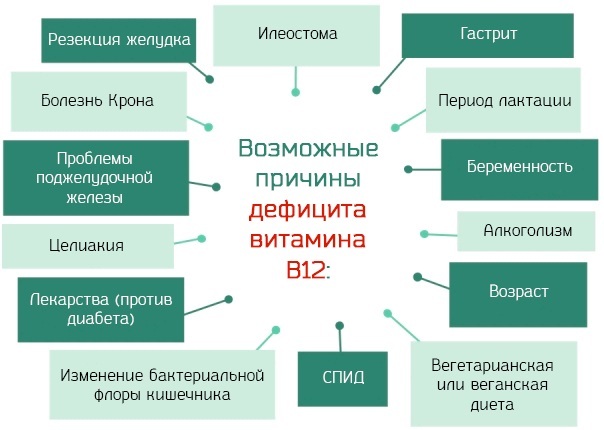
The relative width of the distribution of platelets is disturbed towards the prevalence of old cells. At the same time, there is a deficiency of young platelets, which are responsible for the main functional load to maintain the stable vital activity of the body. Elimination of acute deficiency of vitamins B9 and B12 provides a gradual restoration of the PDW norm.
Viral hepatitis
Infectious inflammation of the liver is a dangerous pathological factor that provokes a decrease in the level of PDW in the blood. In patients with this cause of impairment of indicators of the relative width of platelet distribution, the process of utilization of old cells slows down. In this regard, platelets at the stage of degeneration prevail over the number of young cells.
In patients with reduced PDW who suffer from viral hepatitis, the following pathological signs are noted:
- nausea;
- clarification of feces;
- a change in the color shade of urine towards darkening (urine becomes dark brown);
- physical weakness;
- decreased performance;
- discharge of vomit;
- yellowing of the skin;
- pain or feeling of heaviness in the right hypochondrium;
- loss of appetite;
- aversion to fatty foods and alcohol;
- Strong headache.

Under the influence of this causative factor, the patient has a simultaneous decrease in PDW indicators with the appearance of signs of general intoxication of the body. The risk of opening internal bleeding increases.
Pathologies of the hematopoietic system
Dysfunction of the hematopoietic system leads to the synthesis of a much smaller amount of new platelets than the body of a healthy person requires. A systematic decrease in PDW indices leads to a shift in the balance of the distribution of these blood cells towards the prevalence of old platelets.
The patient develops the following symptoms of a painful state of the body:
- dizziness;
- nausea;
- imbalance of other vital blood cells (erythrocytes, leukocyte formula);
- attacks of severe headache;
- nosebleeds;
- aching pain in the joints and bones of the lower extremities;
- decrease in overall performance and decline in physical strength;
- loss of lean body mass;
- pain in the intestines.
Bone marrow pathologies are dangerous for the human body, since their progressive development can lead to a critical change in the cellular composition of the blood, as well as the onset of lethal outcome.
Therapy with cytostatic drugs
Treatment with potent cytostatic drugs has side effects in the form of suppression of the functions of the liver and the hematopoietic system.  In this case, the balance of the uniform distribution of platelets is disturbed towards a decrease in the concentration of young cells with a predominance of older ones. After completing the course of taking cytostatic drugs, the optimal PDW value is restored.
In this case, the balance of the uniform distribution of platelets is disturbed towards a decrease in the concentration of young cells with a predominance of older ones. After completing the course of taking cytostatic drugs, the optimal PDW value is restored.
Indications for research
The relative width of the distribution of platelets by volume is increased in patients with acute inflammation of internal organs. The analysis for the PDW level is prescribed by a hematologist or general practitioner.
This study is shown in the following cases:
- hospitalization of the patient in the hospital of the surgical department;
- obtaining updated data on the general condition of a patient who is undergoing a course of drug therapy;
- profuse blood loss even with minor tissue damage;
- routine medical examination, which is carried out annually to prevent occupational diseases;
- frequent nosebleeds;
- venous thrombosis of the lower extremities;
- sudden opening of internal bleeding;
- poor blood clotting;
- the need to perform a comprehensive diagnosis of the body for the timely detection of pathologies of the hematopoietic system and tumor neoplasms.
An analysis for the PDW level is prescribed for patients who have signs of inflammatory diseases of the body with a chronic form of the course.
How is it determined
The analysis for the relative distribution of platelets is carried out under sterile conditions in a biochemical laboratory. To perform this examination, the healthcare professional draws blood from the patient's ring finger bundle or from the ulnar vein.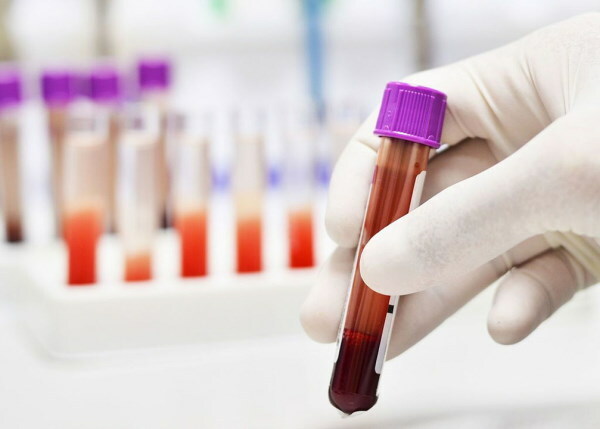
To get the most reliable result about the PDW level, you must observe the following rules for preparing for this analysis:
- 24 hours before visiting the clinic, do not expose the body to intense physical exertion;
- donate blood on an empty stomach, and the last meal should take place no later than 8 hours before visiting the clinic;
- in the morning before donating blood, it is allowed to drink 200 ml of ordinary water without gases;
- 1 day before the examination, you should not eat too fatty, salty or spicy foods.
In the case of a course of taking medications, it is necessary to notify the attending physician about which medications are used during the period of the analysis. The collection of biological material for diagnostics is carried out in the morning until 09-00 h.
If necessary, the hematologist prescribes the following additional diagnostic methods for the patient:
- Ultrasound of the digestive system and spleen;
- biochemical blood test with determination of the level of bilirubin to exclude the factor of a painful state of the liver;
- donating blood for viral hepatitis;
- MRI or CT of the whole body to determine the foci of the inflammatory process, tumor neoplasms;
- bone marrow puncture to rule out bone marrow disease;
- palpation of the liver.
Based on the results of the above studies, the attending hematologist determines the true cause of the decrease or increase in PDW values. After that, the patient is selected an adequate scheme for further therapy.
How to bounce back
To normalize too high or low PDW, drugs are used that reduce or increase the functional activity of platelets.
Aspirin Cardio
Aspirin Cardio is an antiplatelet agent, the active ingredient of which is acetylsalicylic acid at a concentration of 100 mg per 1 tablet. This medication is prescribed to patients with a reduced level of the relative width of platelet distribution.
Aspirin Cardio belongs to the pharmacological group of non-steroidal anti-inflammatory drugs that prevent thrombosis. This drug is taken in 0.5 or 1 tablet 1 time per day. The duration of the therapeutic course is determined by the doctor. The average cost of the medication Aspirin Cardio is from 77 rubles. for 20 tablets.
Clopidogrel
Clopidogrel is a drug with antiplatelet properties. The active ingredient of this agent is the chemical substance clopidogrel hydrosulfite at a dosage of 97 mg. Clopidogrel is used to normalize the condition in patients with a reduced PDW index. The dosage regimen with this medication involves taking 1 tablet of the drug 1 time per day.
The course of therapy is from 7 days to 1 year, depending on the reasons that caused a violation of the uniform distribution of platelets. The average cost of the antiplatelet agent Clopidogrel is from 114 rubles. for 14 tablets.
Sodecor
Sodecor is a herbal preparation with a general tonic effect, which is produced in the form of a tincture with a combined composition. The use of this medication is indicated for patients with a too high PDW value.
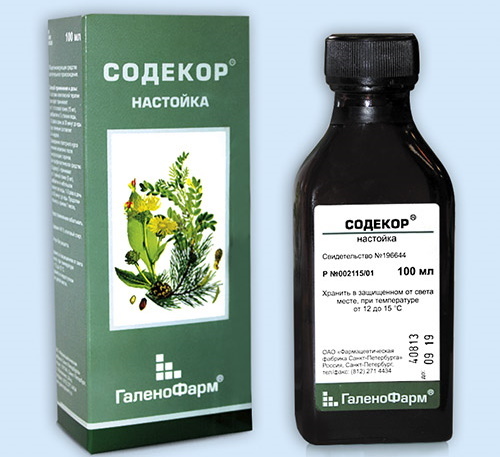
Sodecor is taken orally 15-30 ml from 1 to 2 times a day. A single dose of this medication is dissolved in 200 ml of ordinary water without gases or in warm tea. The optimal duration of the course of therapy is 20 days. The average cost of the drug Sodecor is from 1369 rubles. per bottle with a capacity of 400 ml.
Dicinon
Dicinon is a tablet preparation based on the active substance etamsylate at a concentration of 250 mg. This medication has hemostatic and angioprotective properties, and also stimulates a more active synthesis of platelets by bone marrow cells. The drug Dicinone is indicated for use in patients with too high PDW values. The dosage regimen for this medication is 1 tablet, which is taken 3 to 4 times a day. The price of the drug Ditsynon is from 410 rubles. for 100 tablets.
An increase in the relative width of the distribution of platelets over the blood volume is a sign of one or several diseases of the body at once. A sharp increase in the PDW index is diagnosed in patients with foci of chronic inflammation of the infectious etiology, oncology, internal bleeding, which open during the postoperative rehabilitation.
Anemia, vitamin and mineral deficiencies can also cause an uneven distribution of platelets throughout the circulatory system. Decreased PDW values are found in people with viral hepatitis, diseases of the bone marrow and spleen.
Video about PDW in analysis
RDW in blood test:

